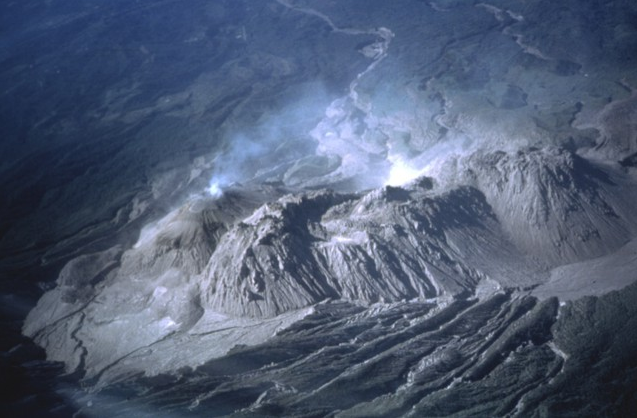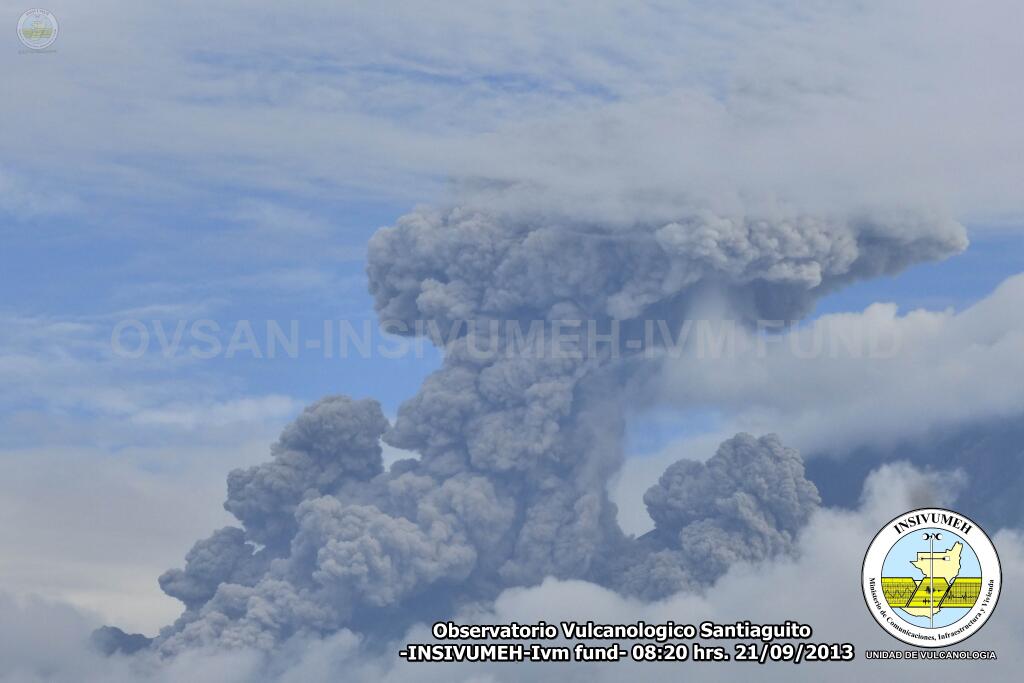Violent eruption and series of major pyroclastic flows at Santa Maria, Guatemala

Another violent eruption occurred at Santiaguito lava-dome complex of Santa Maria volcano in Guatemala on the morning of September 21, 2013. At about 02:30 UTC (08:30 local time), the Caliente dome suddenly produced a series of major pyroclastic flows triggered by collapse of accumulated viscous lava at the southeastern rim and flank of the dome.
The flows descended on all sides of the lava dome.
The explosions, accompanied by shock waves that could be heard in 20 km radius, produced an ash plume that rose to about 4.5 km altitude or about 2 km height above the crater. Significant (but smaller compared) ash plume rose from the pyroclastic flows. Ash fall occurred in Quetzaltenango, Santa María de Jesús, Zuníl and other areas downwind. (VD)
There has been no recognized precursor to the eruption, illustrating that the activity of the lava dome is highly unpredictable and potentially extremely dangerous.
A similar eruption at Santa Maria occurred on August 23, 2013.

Explosion at Santiaguito (Santa Maria) on September 21, 2013. Image credit: INSIVUMEH
INSIVUMEH reported that at 14:05 local time on September 5th a lahar descended Santa María's Nima I drainage on the southern flank carrying mostly fine sediment and 50-cm-diameter blocks, but also a small percentage of blocks 1 – 2 m in diameter. During September 5 – 10 white plumes rose 200 – 500 m and drifted west, southwest, east, and northeast. A few weak avalanches descended the southern part of the active crater of the Santiaguito lava-dome complex. On September 10 another lahar traveled down the Nima I drainage, carrying blocks up to 3 m in diameter. The lahar was 15 m wide, 6 m deep, and had a sulfur odor.
Symmetrical, forest-covered Santa María volcano is one of the most prominent of a chain of large stratovolcanoes that rises dramatically above the Pacific coastal plain of Guatemala. The 3772-m-high stratovolcano has a sharp-topped, conical profile that is cut on the SW flank by a large, 1.5-km-wide crater. The oval-shaped crater extends from just below the summit of Volcán Santa María to the lower flank and was formed during a catastrophic eruption in 1902.
The renowned plinian eruption of 1902 that devastated much of SW Guatemala followed a long repose period after construction of the large basaltic-andesite stratovolcano.
The massive dacitic Santiaguito lava-dome complex has been growing at the base of the 1902 crater since 1922. Compound dome growth at Santiaguito has occurred episodically from four westward-younging vents, the most recent of which is Caliente. Dome growth has been accompanied by almost continuous minor explosions, with periodic lava extrusion, larger explosions, pyroclastic flows, and lahars (GVP).
Featured image: The four major vents of the Santiaguito lava-dome complex are seen here from the summit of Santa María volcano. Caliente vent is steaming at the left, with La Mitad and El Monje in the center, and El Brujo at the right. The dacitic dome complex stretches about 3 km in a roughly E-W direction. Since the birth of Santiaguito in 1922 the focus of activity has shifted frequently during episodic 3-5-year periods of increased growth spaced at 10-12-year intervals. Lava flows and lahar channels extend down drainage to the south from the dome complex. Photo by Bill Rose, 1980 (Michigan Technological University).

APPLAUSE TO THOSE WHO COMPOSED THIS EXCELLENT ARTICLE,
and to Bill Rose, who took the photos ! VERY WELL DONE !